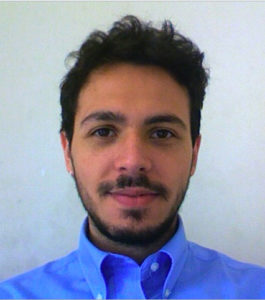
Dr. Valerio Vitale
Host beneficiary: University of Cambridge, UK
Description
E-CAM is working on developing protocols for quick screening of a large set of targeted materials properties based on electronic structure calculations. The software infrastructure supporting this high throughput (HT) approach consists of two parts: 1) Building independent, optimised libraries for relevant functionalities currently not efficient for HT or embedded in existing electronic structure codes, to create an environment enabling their use into a flexible workflow tailored to different end users needs, and 2) developing an E-CAM HT strategy, including both contributions to existing tools and software tools, to adapt them to new hardware architectures and specific scientific problems.
In a first stage software tools will be created to improve, isolate and automatize the calculation of Maximally Localized Wannier Functions (MLWFs), key quantities to analyze the nature of chemical bonding (and therefore of material’s properties) and its evolution during, for example, chemical reactions ((Arash A. Mostofi, Jonathan R. Yates, Young-Su Lee, Ivo Souza,
David Vanderbilt, and Nicola Marzari. wannier90: A tool for obtaining
maximally-localised wannier functions. Computer Physics
Communications, 178(9):685 – 699, 2008.)). These tools will be integrated in existing HTC environments for testing, such as the AiiDA workflow in collaboration with main developers at EPFL.
Development Plan
List of Tasks
- Development of tools and algorithms for automation of MLWFs, within the Wannier90 code and Quantum Espresso code.
- Validation of these algorithms on a benchmark dataset containing a large number of materials.
- HTC within the AiiDA workflow for production results.
- Publication of results from HTC and of new version of the Wannier90 code.
List of Modules
SCDM_WFs
Status: Complete
Description: The Selected Columns of Density Matrix (SCDM) method for generating well localized Wannier Functions from first principles calculations was originally developed by Lin and Damle ((A. Damle and L.Lin, Disentanglement via entanglement: A unified method for Wannier localization arXiv:1703.06958)). It proposes a solution for the perennial problem of having to guess an initial set of projection functions for the minimization algorithm in Wannier90, which seldom requires human intuition and chemical knowledge. We have coupled this algorithm with the Souza-Marzari-Vanderbilt (SMV) original minimization scheme. Equipped with these tools we are able to automatize the process for the generation of Maximally Localized Wannier Functions which makes possible to perform High Throughput calculations on thousands of materials.
SLWF+C
Status: Complete
Description: This module expands the capability of the Wannier90 code allowing the user to localize only a subset of the Wannier Functions, i.e. to perform a selective localization (SL) and also to impose constraints on the centers of these selectively localized Wannier Functions (SLWFs+C). It is found by substantial numerical tests that with this method one may be able to restore the correct symmetry of the Wannier Functions, which is crucial when the WFs are used as a basis for very accurate calculations, e.g. in beyond-DFT calculations (DMFT).
Automated high-throughput Wannierisation
Status: Complete
Description: The purpose of this module is to create a fully-automated protocol based on the SCDM algorithm for the construction of Maximally-localised Wannier functions (MLWFs), in which the two free parameters are determined automatically (in our Throughput approach the dimensionality of the disentangled space is fixed by the total number of states used to generate the pseudopotentials in the DFT calculations).
In the paper derived from this work ((Vitale, V., Pizzi, G., Marrazzo, A. et al. Automated high-throughput Wannierisation. npj Comput Mater 6, 66 (2020). https://doi.org/10.1038/s41524-020-0312-y)), we apply our approach to a dataset of 200 bulk crystalline materials that span a wide structural and chemical space. We assess the quality of our MLWFs in terms of the accuracy of the band-structure interpolation that they provide as compared to the band-structure obtained via full first-principles calculations.
Published Results
Automated high-throughput Wannierisation
Valerio Vitale, Giovanni Pizzi, Antimo Marrazzo, Jonathan R. Yates, Nicola Marzari and Arash A. Mostofi, npj Computational Materials (2020), 6, 66
DOI: https://doi.org/10.1038/s41524-020-0312-y
Outreach Material
Recent Posts

Accelerating the design and discovery of materials with tailored properties using first principles high-throughput calculations and automated generation of Wannier functions

Automated high-throughput Wannierisation, a successful collaboration between E-CAM and the MaX Centre of Excellence

SCDM_WFs

Symmetry Adapted Wannier Functions – a Component of the Wannier90
